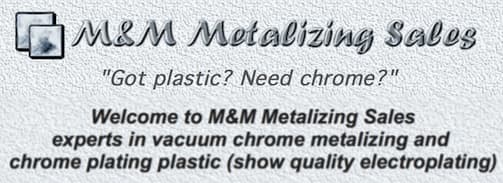
-----
Motorcycle fork tube restoration. Hard chroming
2006
Q. I would like to find out the minimum requirement for re-hard chroming motorcycle fork tubes at home in the garage with the minimum of gear.
Let us say that I am already able to cylinder grind the old chrome off the corroded and scabby old tubes on my lathe with a tool post grinder leaving a clean steel surface to plate on to. And I am able to grind the new chrome to stock diameter and polish after plating.
Tanks are not a problem, I can find containers of the size and shape of the fork tubes that are plastic and chemical/acid/alkali resistant. A 40 gallon plastic drum slit in half may be in the same way as we make a garden BBQ from a steel drum.
What chemicals, electrode material, shape and orientation around the component in the tank should I need and how about the power supply. Will a boost start/charger from an auto shop work? and theories on Voltage, current, time and deposited thickness? and how about starting surface roughness of the steel for good adhesive properties of the chrome?
What would be an average stock thickness layer of fork tube chrome and what would the maximum I can get away with to retain a good resistance to the flexing a fork tube will take? Bearing in mind the thicker the new chrome the thinner left is the original steel of the fork tube.
All I really want to do is restore mine and my friends fork tubes on our old bikes with out paying about 100 UK each leg and waiting ages for them as they are put through with some industrial job lot.
Any advise would be really interesting
Ross From UK
Hobby motorcycle restorer - Birchington, Kent, England, UK
Nobody can possibly tell you everything you need to know on an internet forum. Hard chrome plating is, and has been, the subject of long books. In the end you'll spend lots of money, and make lots of mistakes, and probably destroy some parts and violate environmental regulations long before you can produce the first good parts. Pay a plater to do them.

Jeffrey Holmes, CEF
Spartanburg, South Carolina
2006
2006
Thank you for posting my question on the web site. However, I am an engineer of precision components and electronics and feel that I am quite capable of doing my own work. However in order to eliminate as much trial and error I have posted the question.
You say long books written on the subject?
Any clues then on exactly which book I should be looking at?
Thanks.
- Birchington, Kent, England
by Robert K. Guffie

on eBay (rarely) or Amazon (pricey)
or AbeBooks (rarely)
(affil link)
Hi, Ross. A good start might be our on-line article, "Introduction to Chrome Plating". It doesn't cover all the detail you'll need, but will familiarize you with the issues. Then, specific closed-end questions will be relatively easy for readers to answer, whereas "how do I chrome plate" is the subject for a career rather than an internet posting :-)
Perhaps the best book, if you can find it, is Guffie's "Handbook of Hard Chromium Plating". Another good one is Weiner & Walmsley's "Chromium Plating". Or, if you can find a copy of Peger's "Chrome Plating Simplified", that is worth a look-see too. But you may want to start with the accessible and inexpensive "Metal Finishing Guidebook".
Please note that chrome plating is conducted in very concentrated chromic acid, hexavalent chrome (about 32 oz/gal). It is toxic and carcinogenic. Plating shop employees must be regularly tested for chromium exposure, plating shops must vent and scrub their fumes, and any rinsewater you use is a hazardous material which probably cannot be discharged without a permit. If a neighborhood child contracts cancer for any reason whatsoever, and her parents find out that you were chrome plating in a neighborhood garage, god help you. Good luck.

Ted Mooney, P.E.
Striving to live Aloha
finishing.com - Pine Beach, New Jersey
Ted can be retained for immediate
answers or long term project help
2006
Q, A, or Comment on THIS thread -or- Start a NEW Thread
